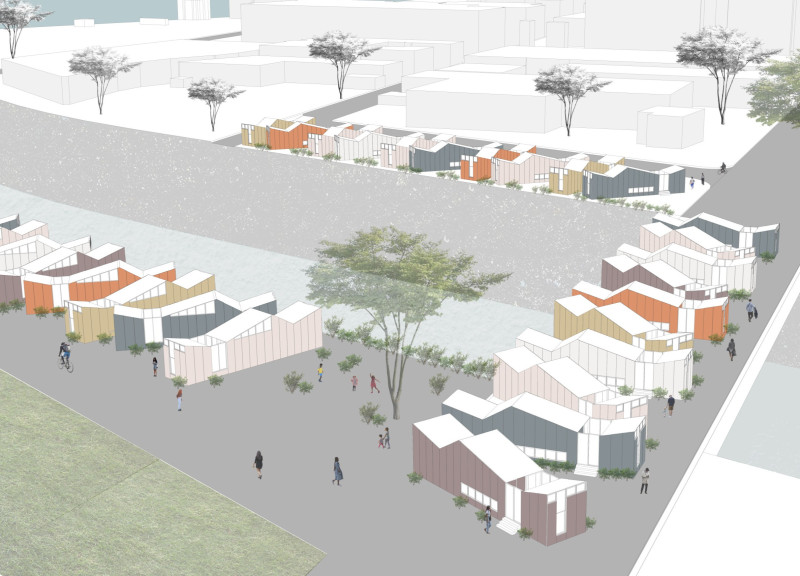5 key facts about this project
The project focuses on a modular housing initiative designed to address the housing crisis in Los Angeles. This architectural design aims to offer affordable and adaptable living solutions within an urban context marked by socio-economic challenges. The project employs modular units, allowing for various configurations tailored to the needs of diverse residents, effectively maximizing space efficiency while promoting community interaction.
Modular Housing Design Concept
The project utilizes a modular approach based on a flexible grid system, promoting the construction of units that can be configured in multiple arrangements. Each module is crafted for specific functions, including bedrooms, bathrooms, kitchens, and communal living spaces. The design facilitates scalability and adaptability, enabling the units to adjust to changing demographics or family structures over time. By situating these modules in clusters along walkable pathways, the design fosters community engagement, encouraging social interaction among residents.
Innovative Materials and Sustainability Features
The architectural design emphasizes the use of sustainable materials. Cross-laminated timber serves as the primary structural component, offering strength with a reduced carbon footprint compared to traditional materials. 3D-printed elements enhance the project’s efficiency, enabling rapid construction while allowing for customization according to site-specific needs. The inclusion of recycled concrete blocks for foundations underscores a commitment to environmental responsibility.
The project integrates various sustainability features, including a rainwater collection system that directs water into storage tanks, supporting onsite water management. Natural ventilation is optimized through strategic window placements, enhancing indoor air quality and energy efficiency. The orientation of the housing units takes advantage of passive solar heating and lighting, reducing reliance on artificial energy sources.
Community-Focused Approach to Urban Living
What sets this project apart from conventional housing developments is its focus on underutilized urban spaces, such as bridges and reclaimed areas along the Los Angeles River. This innovative approach reimagines the use of infrastructure for substantial housing solutions, transforming overlooked sites into vibrant, livable communities. The modular design allows residents to personalize their living spaces, fostering a sense of ownership and connection to the environment.
The nature of the project emphasizes walkability and access to public transport, addressing urban mobility concerns while promoting sustainable living practices. Through its architectural ideas, the project not only responds to immediate housing needs but also contributes to a long-term vision for urban revitalization and social equity.
For additional insights into the modular housing project, readers are encouraged to review the architectural plans, architectural sections, architectural designs, and architectural ideas that reflect the thoughtful execution of this initiative. Exploring these elements provides a comprehensive understanding of the project’s innovative approach to housing in an urban context.





















































